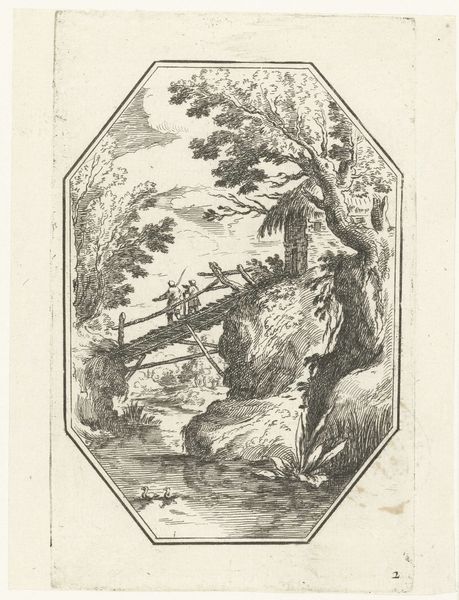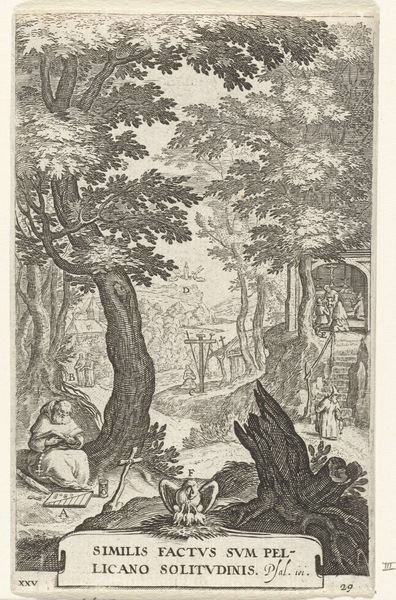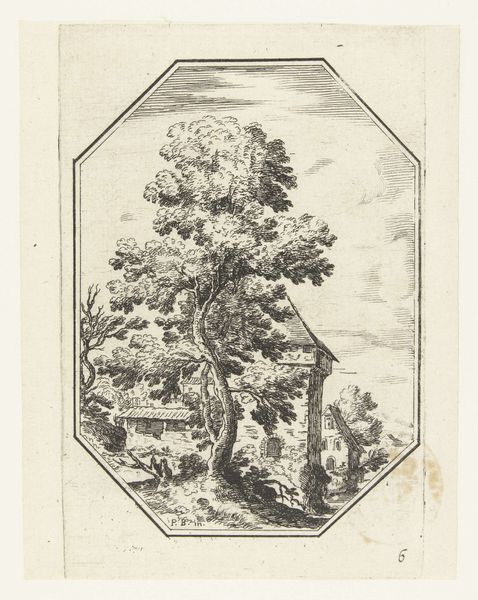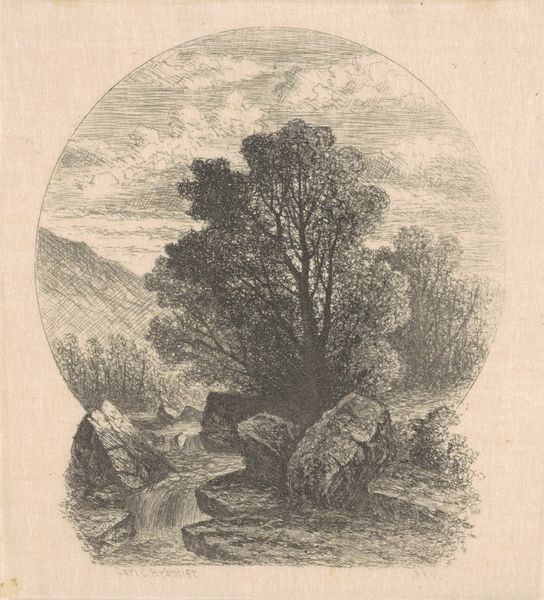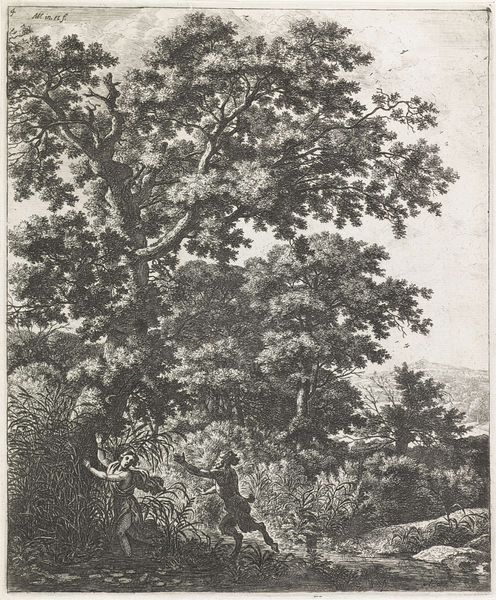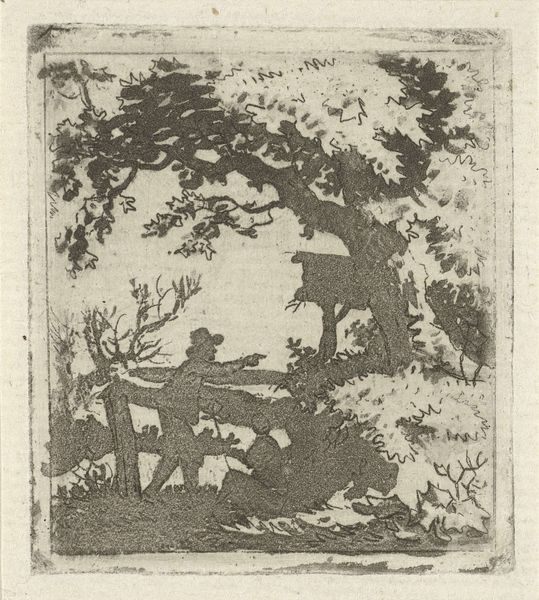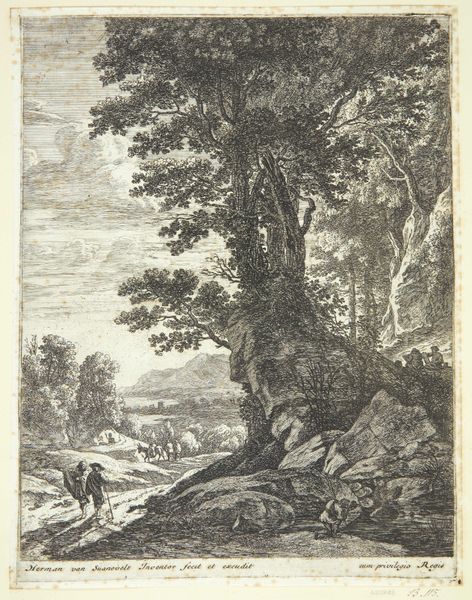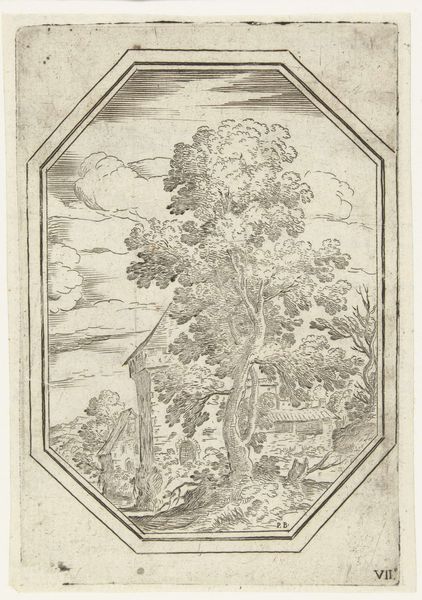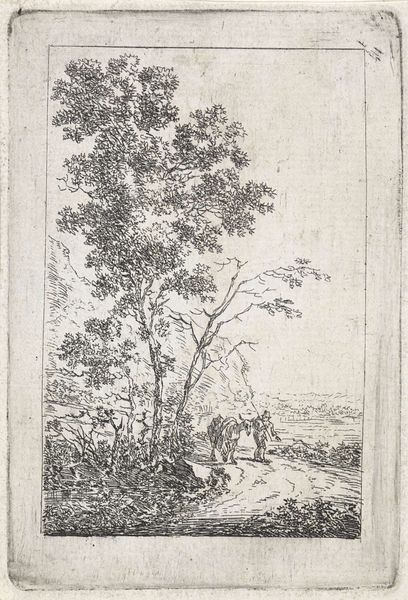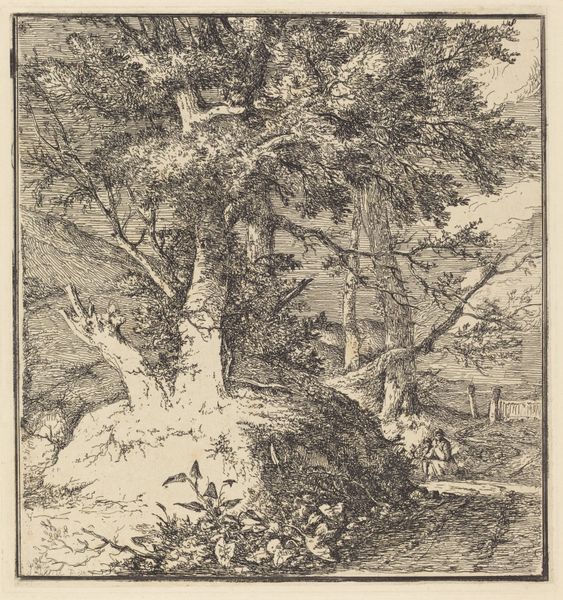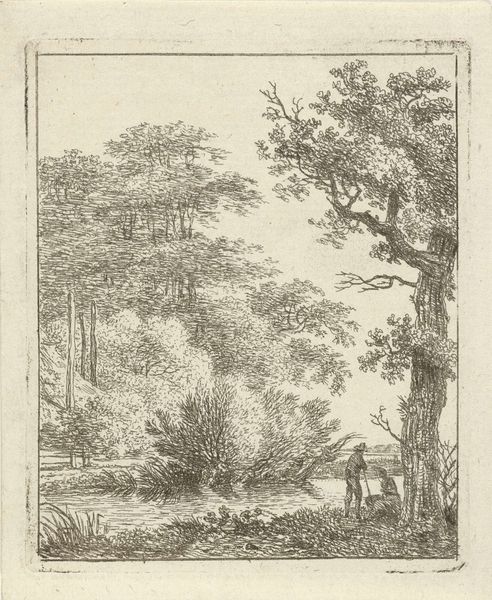
print, etching
#
baroque
# print
#
etching
#
landscape
#
mannerism
Dimensions: height 122 mm, width 86 mm
Copyright: Rijks Museum: Open Domain
Curator: Take a moment to observe "Landscape with a Small Wooden Bridge in an Octagonal Frame," an etching by Paul Bril, created sometime between 1582 and 1626. It is currently held here at the Rijksmuseum. Editor: It's fascinating, isn't it? There's a somberness here, evoked through the almost skeletal bridge and looming rocks. The octagonal border contains this tiny, treacherous world, intensifying the mood. Curator: The mannerist landscape style certainly contributes to that emotional intensity, creating a heightened reality. Bril’s era saw significant societal shifts, including urbanization and the rise of merchant power. Could this landscape be read as an allegory for navigating unstable social terrain? The figures on the bridge become representatives of everyday individuals attempting to traverse the uncertain paths of their time. Editor: I am drawn to the bridge itself, this rickety structure bridging the known and the unknown. Bridges symbolize transition, journeys, sometimes even passages between life and death. In alchemical symbolism, it would definitely be read as an element symbolizing transformation and perhaps risk and reward. Curator: Exactly. We could view those crossing the bridge as marginalized figures challenging structural constraints. It prompts us to examine the accessibility, or lack thereof, within existing societal constructs. The etching emphasizes their vulnerability as well, due to their limited stature relative to the imposing setting. Editor: Absolutely. And note the water, it is no smooth reflecting pool; the dark water near the rocks, shadowed, creates a sense of foreboding. It pulls you in and makes you contemplate the undercurrents. These recurring images build shared associations over centuries, giving Bril's etching a continuous charge. Curator: I find this examination extremely generative. Highlighting the ways landscapes might be reflections of both personal and social dynamics adds a depth beyond surface beauty. Editor: I agree. Considering how enduring certain visual motifs are across eras grants a wider understanding of how art reflects what is, ultimately, universally human.
Comments
No comments
Be the first to comment and join the conversation on the ultimate creative platform.
